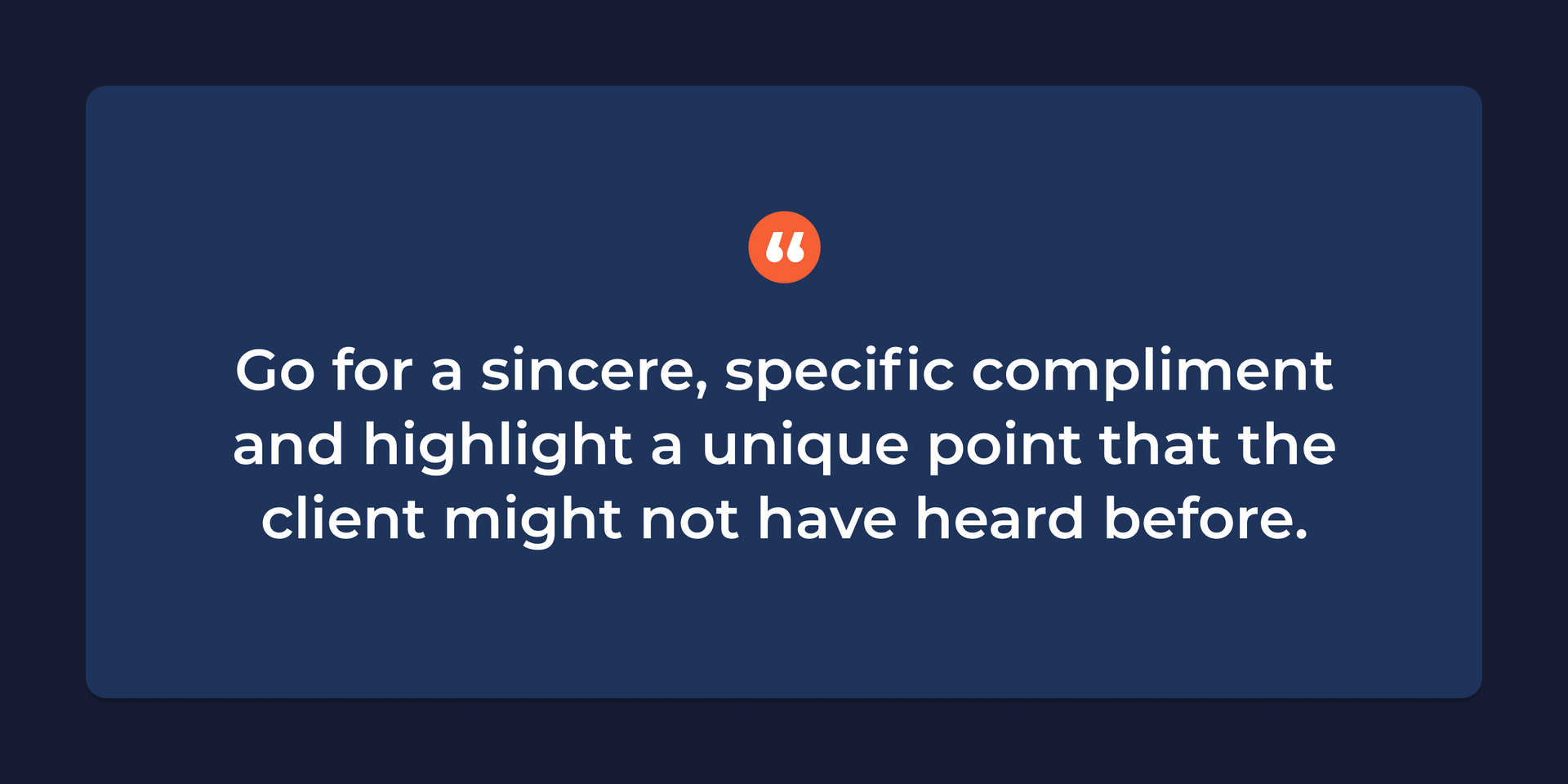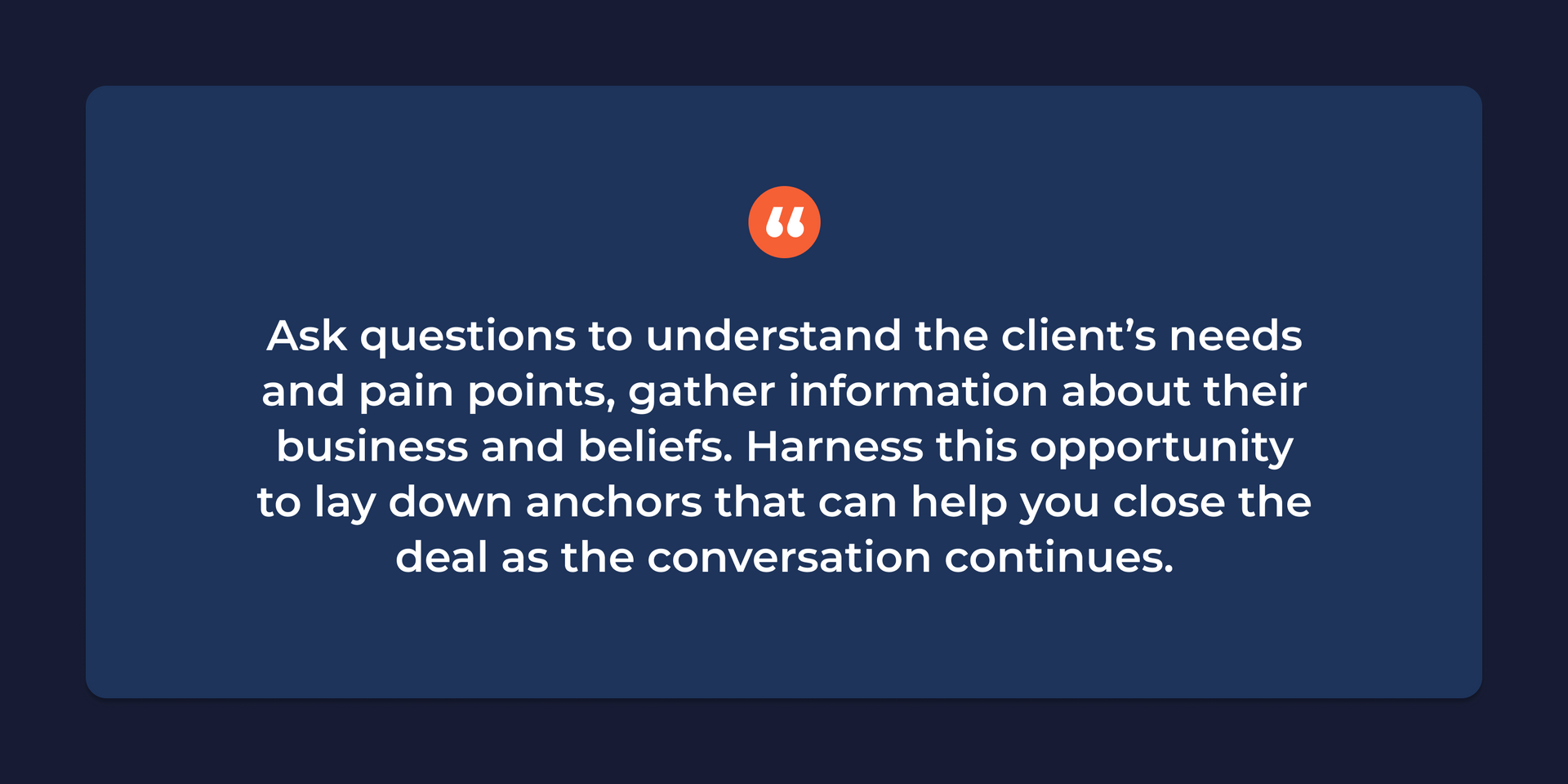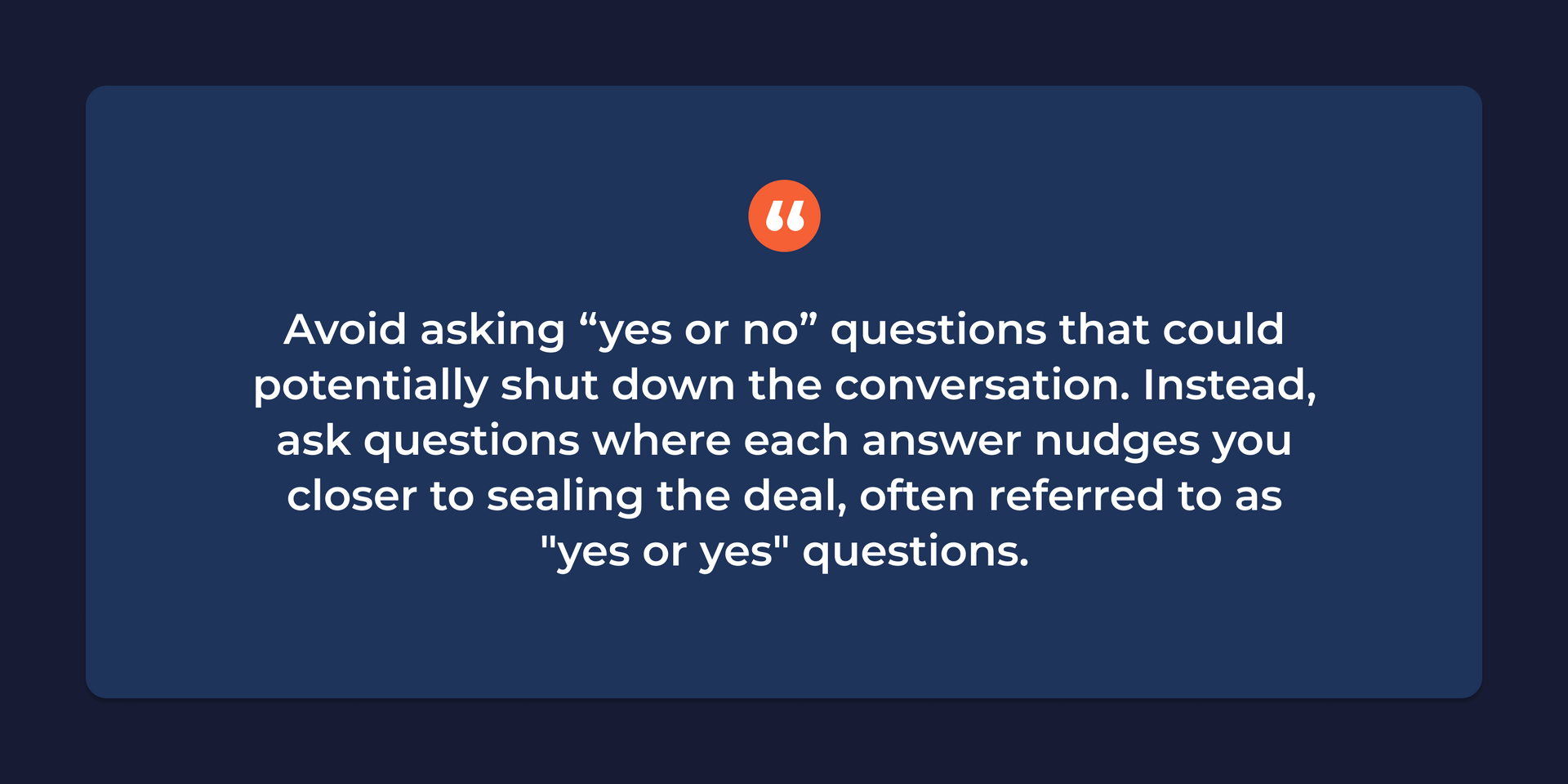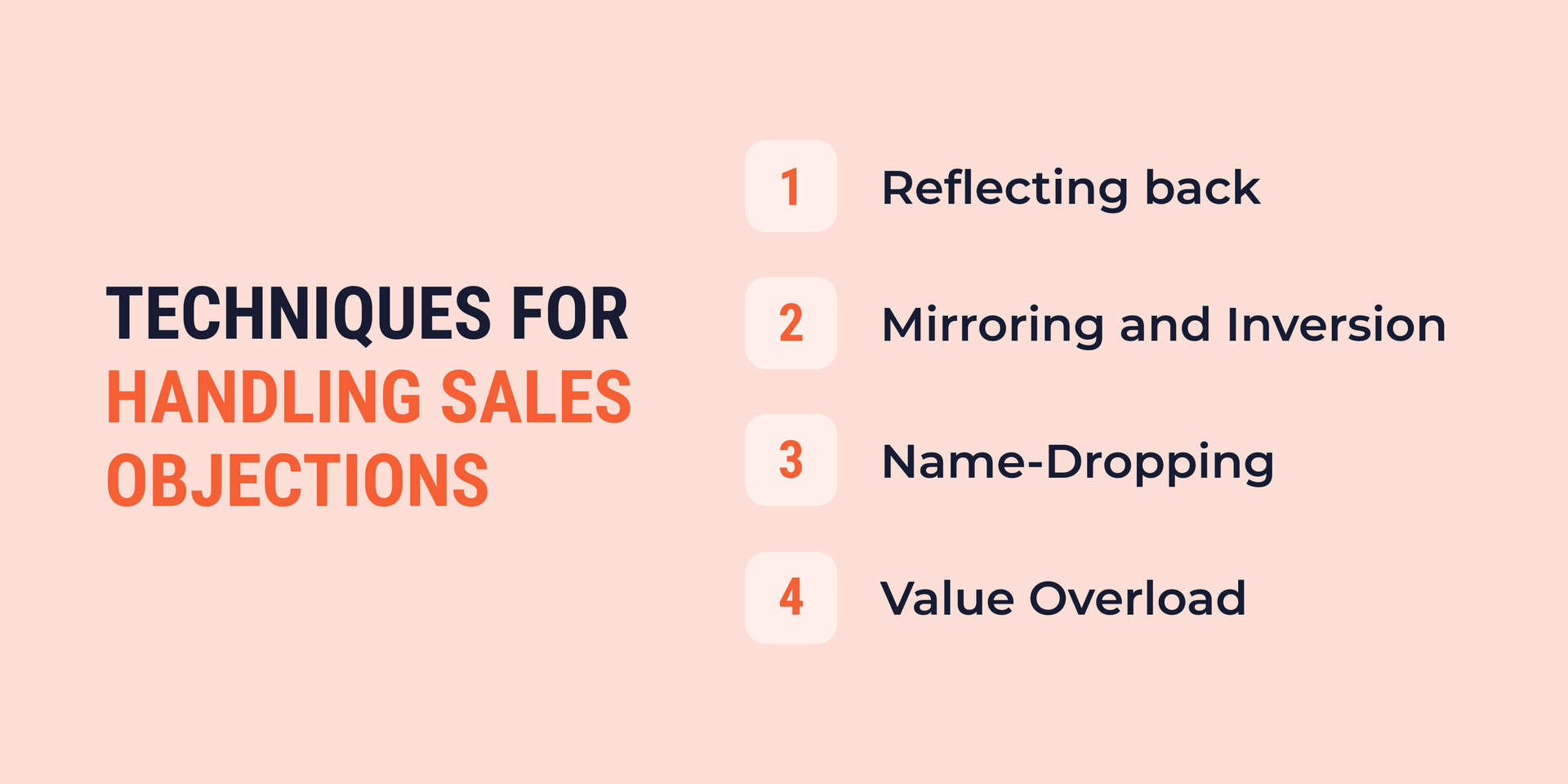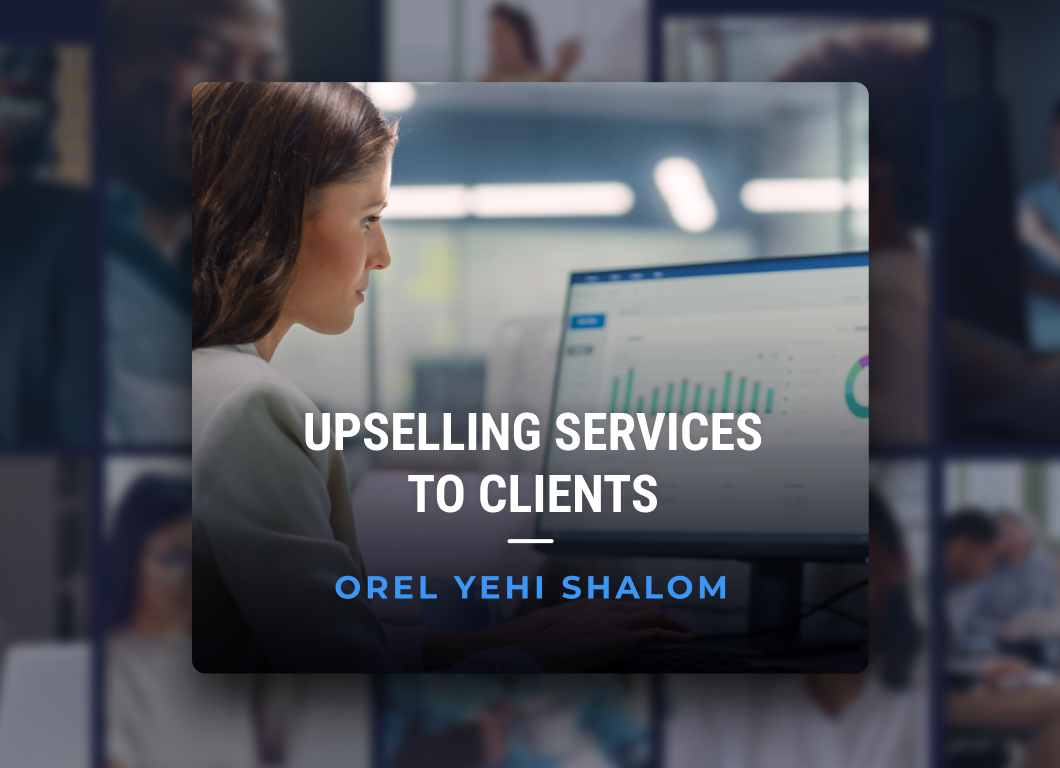In this content series, Scale and Thrive: Growth Insights for
Agencies, by Agencies, we share proven tips and insights from agencies who scaled their operation and delivered proven growth.
This blog post was written by Orel Y. Shalom, a successful agency owner with over a decade of experience in the field. Over the years, Orel has led more than 70 employees, producing over 10,000 websites for clients in a wide range of verticals.
You already know
my creative ways to attract customers. So, you’ve managed to successfully pique a lead’s interest, what’s next? Let me walk you through my tested tactics and general techniques to closing sales and overcoming possible sales objections on the way.
CLOSING SALES WITH A CONVENTIONAL SALES MODEL
The conventional sales model typically involves several phases. Here they are in a nutshell:
1) Cultivate Close Bonds
Do it with a powerful story. Storytelling success relies on your ability to connect with prospects and make them feel at ease. I highly recommend reading Dale Carnegie's "How to Win Friends and Influence People" for tips on fostering closeness.
I’ve also found that complimenting the prospect's website can break the ice. Go for a sincere, specific compliment and highlight a unique point that the client might not have heard before. For example, praise the client’s unique solutions or the impressive visual appeal of their product. Then, subtly shift the conversation to highlight how a product of such exceptional quality warrants a website that is equally modern, dynamic and represents it appropriately.
Plant the notion that the existing website, with its deficiencies in aesthetics and UI/UX, doesn't do justice to showcasing the product in the most advantageous manner. This approach can increase the chances of the client paying attention to the conversation.
Integrating your business’ story and services into the conversation while discussing the client's website is a wise tactic as well. For instance, say something like "As a leading agency that incorporates innovative concepts in website design, we can enhance your product pages by making them more visually appealing to really captivate website visitors."
2) Ask Questions
Ask questions to understand the client’s needs and pain points, gather information about their business and beliefs. Harness this opportunity to lay down anchors that can help you close the deal as the conversation continues.
Your goal is to position your agency as a trusted expert in the field. Consider a visit to the doctor: if the physician were to prescribe antibiotics without сhecking your symptoms, listening to you describing your pains, would you trust their judgment? Likely not.
In the same vein, you initiate a dialogue with the client to pinpoint their needs and understand their pain points. This is akin to a diagnostic phrase. Use this phrase as an opportunity to show clients how your services can ease their burdens.
3) Provide Professional Guidance
Shift the tone of your conversation from an initial friendly exchange to a more authoritative one, reflecting your professional expertise. Based on the insights garnered from the client's input, propose tailored solutions - in this case, a specific type of website. This approach allows the client to perceive your agency as a knowledgeable advisor, fostering trust and encouraging them to follow your recommendations.
Here's a tried-and-true illustration of how we've been effectively offering recommendations at my agency:
Our joint review of your website reveals an improper structure, missing lead form and contact info, and lengthy content that doesn't spur visitor action. Our solution: a customer-attracting site that encourages action, includes an online purchase option, and showcases a high-end, branded design suitable for your luxury product.
I’ve seen many sales people fearing client objections during this stage. Instead of succumbing to fear, embrace objections as valuable opportunities. Remember, a resistant customer is essentially a prospective buyer who is genuinely interested in making a purchase but may have specific concerns or hesitations they want to address before finalizing their decision.
Continue asking targeted questions to understand their concerns and offer more solutions. For example, ask about expected return on investment or create visual representations of the product to help the client envision its potential benefits.
While we’re on the topic of asking targeted questions, my advice is to avoid asking “yes or no” questions that could potentially shut down the conversation. Instead, ask questions where each answer nudges you closer to closing the deal, often referred to as "yes or yes" questions.
For instance, ask them which package they prefer, giving them the option to choose between two or more offerings. I’ve also found that asking questions that assume a positive response, such as "Which of these options works best for you?" or "Would you like to proceed with this plan?" works like a charm.
Another one of my effective techniques is asking a "pulse test" question, such as "Would you like us to schedule an appointment with our designer?" This question helps to gauge the client's interest and willingness to move forward to closing a sale.
Assuming a positive response, you can then move on to the next steps, such as setting up a preliminary client profile in the system to capture important information about the business. Read more about this below where I dive into practical techniques to ensure your client shares their payment details.
4) Summarize and Close the Deal
The idea is to transition from discussing needs and options to a more concrete conversation about deal specifics that must end with setting up a customer profile in the system and getting the payment.
Confirm website type and page limits for content entry, go over the picked plan and pricing, the means of payment (the client should know all payment terms, including VAT exclusivity) and outline the next steps.
By doing this, you create a clearer path towards closing the deal and prevent misunderstandings about endless content additions or bespoke designs without extra fees.
I recommend highlighting their responsibility in providing necessary materials and their active participation for smooth project execution. This ensures everyone is on the same page and that there are no misunderstandings or miscommunications.
So you’ve started selling your agency’s services to a decision maker, but what do you do if they object?
TO CLOSE A SALE SUCCESSFULLY, EMBRACE OBJECTIONS
Before we go any further, I want to remind you that sales objections are a positive sign for your agency, indicating the client’s interest in your product and their willingness to negotiate. Instead of avoiding objections, it's better to address them head-on and provide the right response to move towards closing the deal.
To accomplish this, direct your attention towards obtaining a positive response from the potential client regarding two essential questions: 1) what is their rationale for needing a website, and 2) why should they opt for your agency over others, particularly now?
4 PROVEN TECHNIQUES FOR OVERCOMING OBJECTIONS IN SALES
If there’s anything my experience has taught me, it is that the key to overcoming sales objections is to first understand the root cause of the objection. Always dig deeper and identify the underlying need or fear that the client may not be expressing directly.
- Reflect back to the client that their needs or concerns have been understood. Then, provide an answer using the client's language, incorporating the important points previously discussed in the conversation, and communicating in a way that resonates with their communication style.
- Mirroring and Inversion - This is one of my favorite sales techniques for objection handling. It involves restating the client's objection using concise language that prioritizes the points that support your argument. You can then explain why, precisely because of these reasons, the client should move forward with creating a website. I discuss this technique in more detail in my next blog post, dedicated to overcoming common sales objections.
- Name-Dropping - Give examples of success stories, including a well-known company, and actual statistics to encourage the new client to get on board and boost their confidence. This will give the client the reassurance that you are a reputable agency that can be trusted. For instance, mention that in the last month alone, ten different law firms built new websites using your services and were able to increase their number of leads by X percent.
- Value Overload - When faced with objections from a client, focus on flooding the value of what your agency can offer them. Remember, the client will weigh all factors before making a decision to move forward, so address any concerns promptly and provide clear answers while the client is still interested. In my experience, the client, upon weighing the full array of benefits, will likely opt to secure the deal. This is because the collective merits of the agreement outweigh any minor unresolved issues.
In sales conversations, it is common to encounter objections from potential clients across various categories. However, that’s a topic for another blog post.
FINAL THOUGHTS
Now your agency has a list of powerful tactics to overcome sales objections with ease in its playbook. Don't let sales objections hold your agency back.
By implementing these, your sales can confidently handle objections, win over hesitant clients, and maximize your sales potential.
Related Posts
By Orel Y. Shalom
•
November 22, 2023
In this post, we'll dive deep into what this web design agreement includes and discover how we can make it easy for them to say 'yes' and move forward together!
By Orel Y. Shalom
•
November 3, 2023
Unlock your agency's potential with smart upselling strategies. Explore a successful agency owner's in-depth guide on enhancing revenue per client, with proven tactics for effective upselling. Amplify your client value, drive growth, and secure your agency's financial health.
By Orel Y. Shalom
•
September 27, 2023
With a well-designed and personalized design KPIs dashboard command center, you can make informed decisions, continuously improve, and stand out among other agencies. Learn how to create the perfect KPIs dashboard.
Show More



